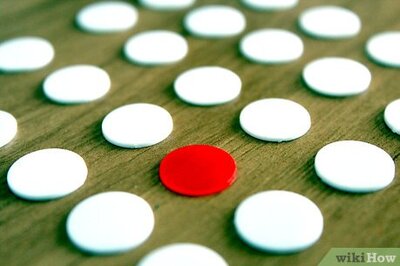
views
HYDERABAD: When we hear the term ‘Gongadi’, it sounds new and obscure.But once you set your eyes on this coarse black woollen rug, it reminds you that it is like your old friend, who got lost a few years ago.It is now making its way back into the market --- all thanks to the efforts of a city-based NGO, Anthra and a Londonbased textile designer Elana Dickson.Story of the black rug with a white border Gongadi is the traditional, 100 per cent khadi woollen blanket of Telangana, woven from the wool of the unique black wool Deccani sheep breed. Locally known as ‘nalla-gorre’, this highly adaptable sheep used to provide livelihood to a wide range of farmers, shepherds and craftsmen in the Telangana region.But, during the mid-nineties, various government policies cropped up, diluting the breed and causing a decline in the weaving of gongadi. “There were various government policies like --- one was to introduce the faster growing non-wool Nellore breed of sheep, originating from Coastal Andhra, into Deccani flocks,” reveals Sagari Ramdas, director of Anthra.But, around 2005, this NGO came to the rescue of some of the farmers, shepherds and craftsmen of Medak district. “We had heard about gongadi and how the craft was near extinction.So, we decided to take up the issue and work with the people in order to revive this valuable craft of Telangana,” says Ramdas, who believes that this exhibition will help them create awareness among the people in the city about how people in Telangana are struggling to keep their craft alive.Uniqueness of Gongadi You may wonder as to how different is a gongadi from any other woollen rug or blanket? Well, the most unique quality of this rug is that it not only keeps you warm during winters, but also keeps you cool during extreme summers and protects you from heavy rains as well, making it a multipurpose blanket.“Gongadi can be used as a blanket, it can be laid on the floor so that one can sit on it and people also used to use it to store grains,” emphasises Ramdas and further elaborating on another unique quality of gongadi, says, “Initially it is rough, but the more one uses a gongadi, the softer it becomes.” Experimenting with designs While Anthra has been working with some of the weavers from Medak district since 2005, a London-based textile designer, Elana Dickson, joined their team in February this year.“I found out about gongadi through a friend. Since I have worked with hand weavers earlier, I decided to make my contributions to this form of art as well,” says Dickson, who is also in the city for the exhibition and is very excited. She has helped the weavers get in touch with their creative side and experiment with various designs. “Traditionally a gongadi is black and has a white border.So, along with accommodating that border, we have also worked on adding different designs to the rug.And the weavers have been very supportive and creative,” adds the textile designer. An exhibition featuring Gongadi, along with a display of the unique loom that is used to create this woollen art, will be on from today at The Malkha Shop, Humayun Nagar, from 11 am to 7 pm. Contact: 040-23325548




















Comments
0 comment